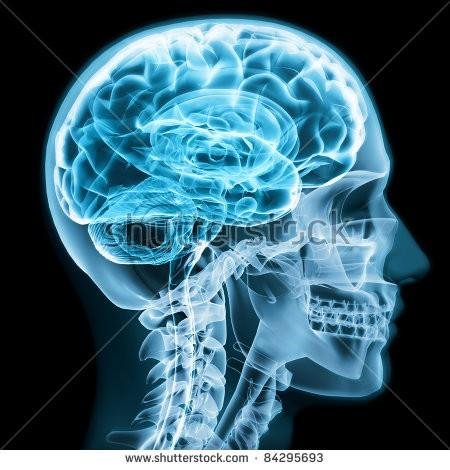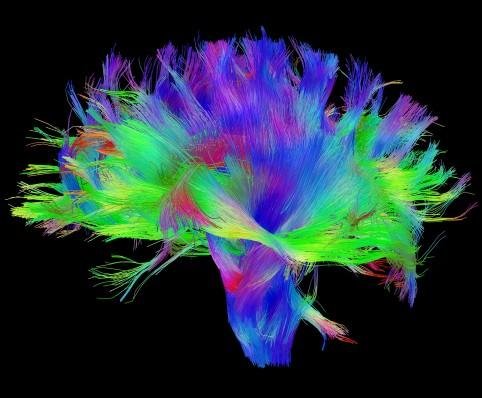Our Brains and The Human Connectome Project

The brain is among the most complex structures known, with approximately 90 billion neurons transmitting information across 150 trillion connections. -David Van Essen, Ph.D. Washington University School of Medicine.
The Human Connectome Project(HCP), is one of the greatest researches of the 21st century.
The HCP was launched in July 2009 by the National Institute of Health Blueprint for Neuroscience Research under two consortia;
•Washington University, Saint Louis and the University of Minnesota, and
• Harvard University , Massachusetts General Hospital and the University of California in Los Angeles.
It is one of the three grand challenges of the NIH Blueprint for Neuroscience Research launched in 2009 and 2010. These three challenges have a common focus- the human brain- to understand its fundamental structure and function and hence, pave way for the treatment of neurological disorders.
The HCP is funded for five years with the total sum of $30 million to the first consortium and $8.5 million for three years to the second mentioned above.
The HCP is aimed at understanding the connectivity of the brain by mapping it out anatomically and functionally, studying how the different parts of the brain communicate with one another and how these connectomes affect and influence healthy brain function, hence our behaviour and emotions. It would also increase our basic knowledge about brain disorders like autism, schizophrenia, Alzheimer’s disease, then help to treat them. By this research, understanding about the role of the brain in health and disease will become almost, if not totally clear.

Diffusion MRI of the human brain
Researchers of the HCP employ the use of non-invasive technology like the functional MRI (fMRI), which measures brain activity through cerebral blood flow, and but not necessarily the High Angular Resolution Diffusion Imaging (HARDI) which is used to visualize axon bundles, Resting State fMRI (R-fMRI) to find interconnections in a human's brain while he is resting, and MEG in combination with the fMRI (E/M fMRI).
This combination of state-of-the-art technology combats one of the major limitations of neuroscientists in the study of the brain.
Mapping the circuits and linking these circuits to the full spectrum of brain function in health and disease is an old challenge, but one that can finally be addressed rigorously by combining powerful, emerging technologies. -Thomas Insel, Director NIMH (2002-2015).
HCP researchers have studied the brain in 1200 healthy, young adults, and also the human brain at the progressive stages of life (infancy, childhood, adolescence and aging) and in disease. By comparison of the healthy human connectomic scan with that of a diseased one, understanding as to how the disease affects the brain circuitry is provided.
From the findings of this research, it is evident that the variability in the connectivity of the human brain is responsible for the different behavioural and cognitive traits seen in each personality. Wonder why some people are smarter than others? They could have more effective circuitry in the brain.
Information as to the role of the environment and genetics in different cognitive patterns in people, identical and fraternal twins inclusive (as brain convolutions vary in every entity) could also be provided.
In March 2017, data from the 1200 subjects of the HCP were released on the internet. See at humanconnectome.org
Hopefully, neurodenegerative disorders like Alzheimer's disease, autism, schizophrenia, epilepsy, Parkinson's disease including depression and anxiety could be prevented, treated specifically and possibly cured by studying the data from this project.
Critics found absurdity in the idea behind the HCP that they consider it a waste of finances, but just as the Human Genome Project proved successful, the Human Connectome Project should too.
Thanks for reading!
SOURCES:
https://en.m.wikipedia.org/wiki/Human_Connectome_Project
https://www.humanconnectome.org/study/hcp-young-adult/project-protocol/behavioral-testing
Images sourced from shutterstock.com and humanconnectome.org
Wow... Science rocks!
Yes, it does!
great article but a bit too technical for common taste. Nonetheless great job
Okay. I'll put that into consideration when writing my next. Thank you very much.
It is high time we found treatment to complicated neurological diseases like Parkinson, Alzheimer and Autism. The HCP looks promising and I can't wait to see how their research would eventually change things.
Yeah... Me neither